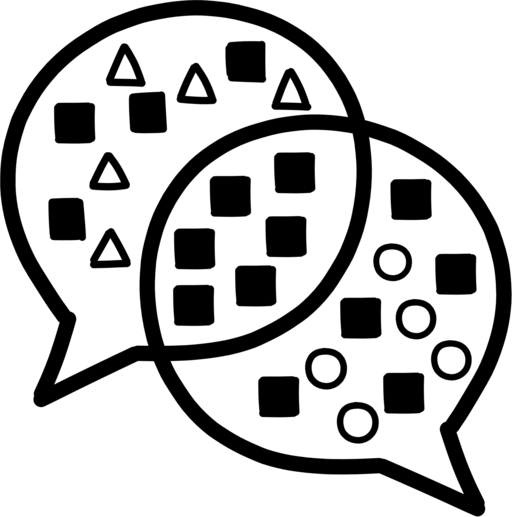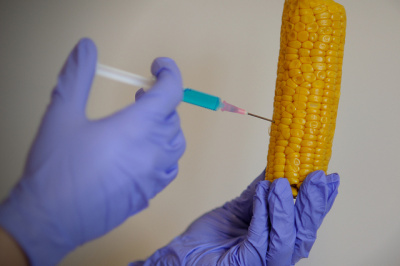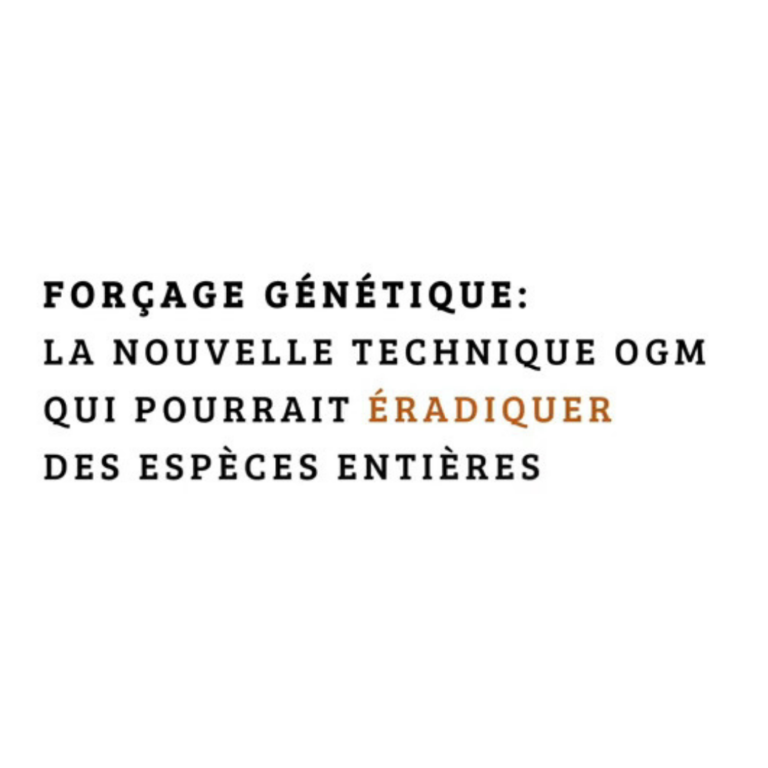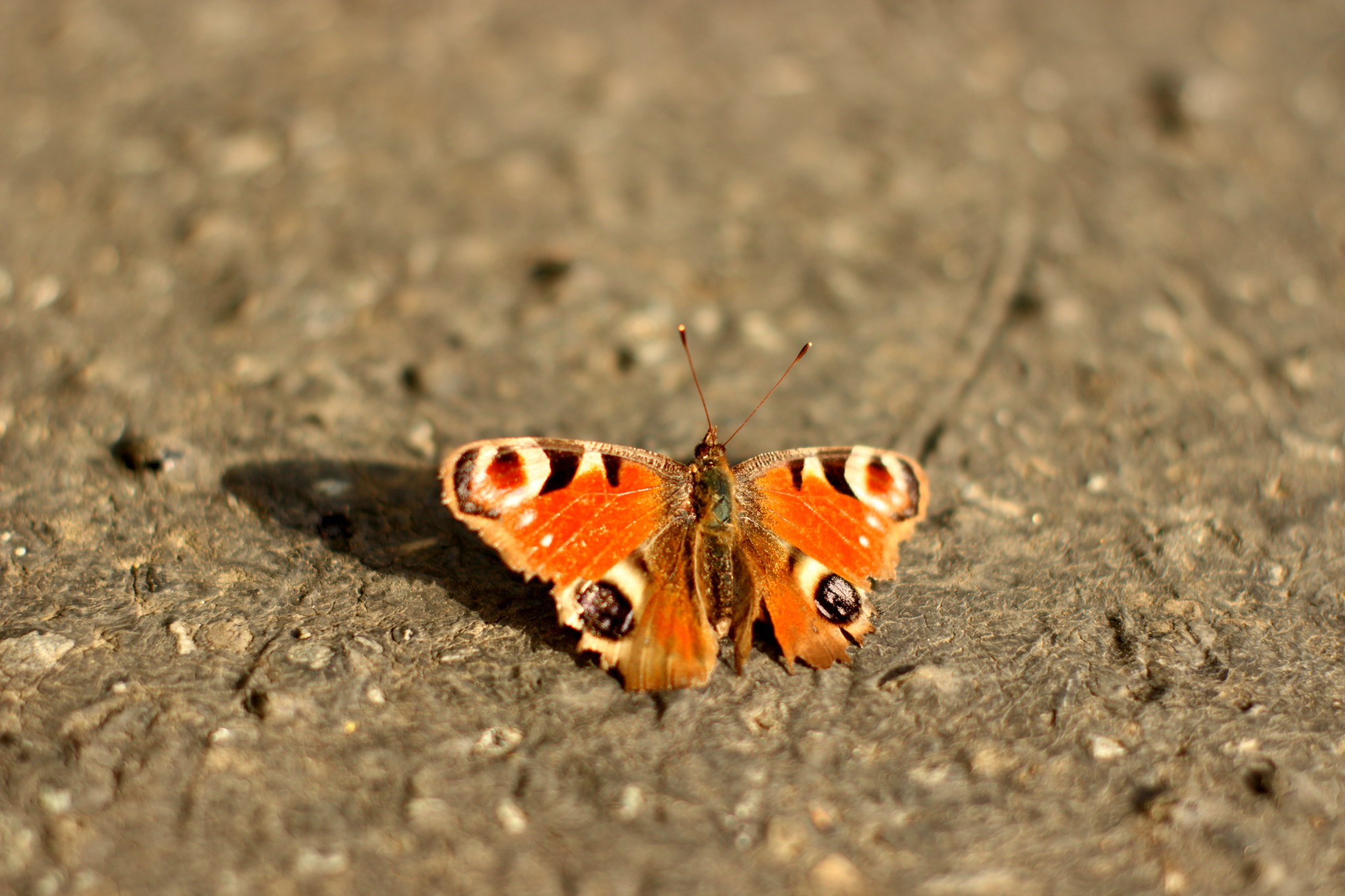Actualités
Three-parent babies: GMO babies?
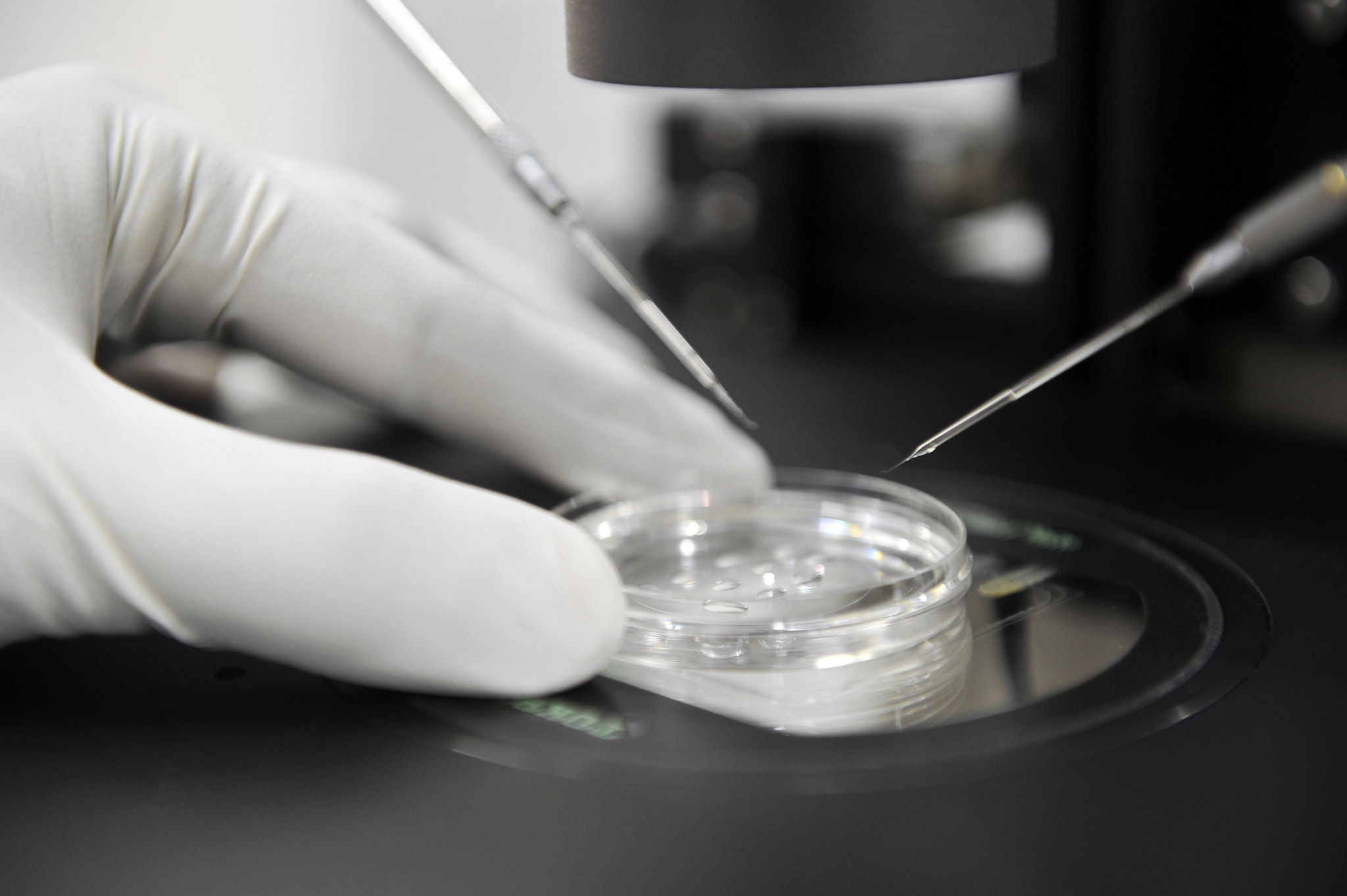
Three-parent in vitro fertilisation (IVF), which came out of the laboratories in 2015, is intended to solve certain hereditary diseases. Sometimes referred to as “mitochondrial donation”, this practice, which is better known abroad than in France, regularly returns to the forefront of the media [1] [2] Are the children born from this IVF, with genetic contributions from two women and one man, not GMOs?
To understand the ins and outs of three-parent IVF, we first need to explain what mitochondria are and, above all, develop a bit of their impressive evolutionary history in relation to their properties. And if three-parent babies are GMOs, in the scientific sense of the word, we will have to go and see what the law says.
Mitochondria and their history
Mitochondria located in the cytoplasm (200 to 2000 per cell) are elements (organelles) essential to the respiration of any eukaryotic cell [3]: thanks to the nutrients and oxygen ingested by the organism and ending up in the cell, it produces an energy-rich molecule, ATP [4].
Mitochondria have one notable property: they have their own DNA which forms the mitochondrial genome. And this is no coincidence, because in their history, mitochondria are former bacteria (proteobacteria) that have entered other cells: the archaea. This symbiosis between two living organisms (or endosymbiosis), suspected as early as 1905 and revived in 1970, dates back to 1.5 or 2 billion years ago… [5].
The DNA of the mitochondria in humans contains 37 genes on a circular DNA molecule, which are subject to mutation. Of these genes, 13 are genes that code for proteins responsible for mitochondrial respiration. The remaining genes provide instructions for the manufacture of different kinds of RNA. About 3000 complementary proteins are essential for mitochondria. These proteins are encoded by DNA in the cell nucleus [6]. Mitochondrial processes therefore depend on both mitochondrial DNA and nuclear DNA. Many of the nuclear genes involved in mitochondria have been transferred during evolution from the mitochondrial genome to the nuclear genome.
It has been found that the size of the mitochondrial genome has been decreasing since the endosymbiosis of proteobacteria. Compared with present-day proteobacteria, mitochondria have lost 99% of their genes [7] But those that remain in the mitochondria, if they have undergone a mutation (natural or not), can sometimes pose a problem…
In almost all mammals, mitochondria (and their genome) are transmitted exclusively through the mother.
A recent study suggested that some human mitochondrial DNA was passed down through the paternal lineage [8]. After checking the DNA of more than 11,000 families (100,000 genomes), these were recent insertions of mitochondrial DNA from the father into his nuclear DNA, and thus transmissible via his sperm [9]. These new transfers are in fact happening all the time, participating in the evolution of our genome [10]
Why do we do three-parent in vitro fertilisations?
Mutations in the mitochondrial DNA can lead to dysfunction of the respiratory chain in the mitochondria and cause subnormal ATP production. For some organs such as the brain, muscles and heart, this underproduction is fatal.
If the level of deficient mitochondria is low, pre-implantation diagnosis after normal in vitro fertilisation and selection of embryos for implantation will suffice. Otherwise, in some countries, three-parent IVF is considered or performed. The”mechanistic » idea is to replace abnormal mitochondria with healthy ones.
The mitochondrial DNA only has a version of a gene that comes from the mother. If this is mutated and defective, the embryo with the defect will be affected.
The principle of three-parent IVF is shown in the diagram below. It consists of taking an oocyte [11] of the future mother, whose mitochondria are defective, remove the nucleus and insert it into an enucleated egg cell of another woman, which in fact gives the whole cell (except the nucleus), including the healthy mitochondria. It is then fertilised with a spermatozoon. One cannot therefore speak of “mitochondrial donation”, as is often done in the media: these are in fact nuclear transfers [12]. The method is indeed doomed to failure if only mitochondria are transferred.

In reality, it is more complex. On the one hand, many fertilisations in vitro must be carried out for safety’s sake. On the other hand, one study showed that “a small fraction of mitochondria imported during nuclear transfer could recolonise the host oocyte […], a phenomenon that could compromise the effectiveness of mitochondrial replacement” [13]. Indeed, the mitochondria are very numerous around the cell nucleus and some of them, which are defective, can be transferred at the same time as the nucleus and end up in the unborn embryo.
There is another technique that uses embryos rather than oocytes, but it requires two IVF procedures: one in the host mother and one in the donor mother.
Are three-parent IVF babies GMOs?
The question of whether three-parent IVF results in a genetically modified baby is important because no changes are made to the nuclear genome. However, this technique conclusively creates human embryos that are genetically modified by the genome of the given mitochondria. Logically, from a scientific point of view, the human beings born are GMOs.
Directive 2001/18/EC cannot provide a legal solution, as it sweeps the issue aside by excluding humans from GMOs. However, under this directive, the unborn child is an “organism whose genetic heritage has been altered in a way that does not occur naturally”. The genome is not limited to the nuclear genome.
Article 13 of the Oviedo Convention (on Human Rights in Biomedicine), which originated with the Council of Europe, prohibits this practice since it “aims to introduce a modification in the genome of the offspring” [14]. The United Kingdom, which authorised three-parent IVF in 2015, has not ratified this Convention, unlike France [15].
Debates on this subject did not take place during the preparation of the 2021 bioethics law in our country. In 2016, the Biomedicine Agency gave the green light to experiments on human embryos concerning three-parent IVF. Contested, this authorisation was cancelled by the courts in December 2021 [16]. Indeed, at the time of the request for authorisation, the French law in force prohibited the creation of genetically modified embryos and the mitochondrial genome was an integral part of the embryo’s genome. The Court ruled that the Biomedicine Agency was illegal in authorising this work.
In 2019, Opinion 133 of the National Consultative Ethics Committee (CCNE) is clear and apparently does not make a decision: “Even if it is mitochondrial DNA, and not nuclear DNA, the child’s genetic heritage therefore includes foreign DNA that can be transmitted to subsequent generations by daughters. Although this mitochondrial DNA is of human origin and has not undergone genetic modification, there is still some unknown about the long-term evolution of the mitochondrial population. However, it is essential to consider whether, in this case, the prospect of treating a child for a potentially lethal disease by introducing functional mitochondria naturally present in human populations, and therefore not genetically engineered, is a treatment for the disease and not eugenics” [17] In fact, the definition of eugenics has been modified by the CCNE and in this case, for this committee, there is no eugenics [18]. The CCNE has actually decided: it is in favour of 3-parent IVF.
A technique to “rejuvenate”?
There is another purpose behind this technique: that of wanting to “rejuvenate” women’s oocytes by using younger donor eggs. There is even a market for what is called “mitochondrial donation” [19].
The desire to give birth to a healthy child is understandable for a couple: is it not a response to the life drive that has shaped the evolution of living beings? But at the level of human civilisation, could this step towards the artificialization of birth, which is three-parent IVF, not eventually lead to having a baby à la carte, improved, without genetic defects? A pure product of the techno-industrial system and not a being? A living being is not manufactured, it is born. It is born, in all its biological complexity inherited from its evolutionary history and so far from its genes alone.
[1] Benkimoun, P., “British MPs authorise the conception of babies from three DNAs”, Le Monde, 3 February 2015.
[2] « Birth in Ukraine of a child conceived by a “three-parent” IVF », AFP, 19 January 2017.
[3] Eukaryotic cells are distinguished from prokaryotic cells: they have a nucleus and organelles. Prokaryotic cells have no nucleus, their DNA is a non-enveloped circular chromosome and they have far fewer organelles. Bacteria and archaea are prokaryotes, all other living things are eukaryotes
[4] ATP: Adenosine Tri Phosphate. The breaking of certain bonds in this molecule produces energy, enabling cellular life
[5] On endosymbiosis, see :
- SELOSSE Marc-André, JOYARD Jacques (2021), “Symbiosis and evolution: at the origin of the eukaryotic cell”, Encyclopédie de l’Environnement, 2021;
- and Laure Cailloce, “Les nouvelles frontières du vivant”, CNRS Le journal, 18 October 2021
[6] Chatre, L., “Presentation of some characteristics of mitochondria: organisation, structure and roles in the cell », Planet Life, 22 May 2017.
[7] Selosse, M.-A. ; Joyard, J., “Symbiosis and evolution: at the origin of the eukaryotic cell”, Encyclopédie de l’Environnement, 2021
[8] Luo, S., “Biparental Inheritance of Mitochondrial DNA in Humans”, PNAS, Vol. 115 | No. 51, November 2018.
[9] Wei, W., Schon, K.R., Elgar, G. et al., “Nuclear-embedded mitochondrial DNA sequences in 66,083 human genomes”, Nature 611, 105-114, 2022.
[10] This genome is not very stable as we learned in the 1970s.
[11] The oocyte is the cell actually fertilised by the spermatozoon, the better known egg is the next stage but caused by fertilisation. The egg cell has a very short life span, because immediately afterwards the male and female nuclei unite and this is the egg cell stage.
[12] Knoepfler, P., “Myths about 3-person IVF mitochondrial transfer”, The Niche, 10 February 2015.
[13] Nina Entelis, “Mitochondrial replacement – Three people to give life to a healthy child?”, Controverses des MinesParisTech.
[14] Article 13 : Interventions on the human genome – “An intervention the purpose of which is to modify the human genome may be undertaken only for preventive, diagnostic or therapeutic reasons and only if it does not have as its aim to introduce a modification in the genome of the offspring”. See , « Génome humain : brèche dans l’article 13 de la Convention d’Oviedo », Inf’OGM, 14 December 2022.
[15] Benkimoun, P., “British MPs authorise the conception of babies from three DNA”, Le Monde, 3 February 2015.
[16] “Three-parent IVF: the Biomedicine Agency condemned”, Gènéthique, 9 December 2021
[17] Opinion of the CCNE, “Opinion 133 – Enjeux éthiques des modifications cibles du genome : entre espoir et vigilance”, 19 September 2019.
[18] Testart, J., “La quête de pureté – Eugénisme : gommer le mot ou poser des limites”, Esprit, July / August 2022.








